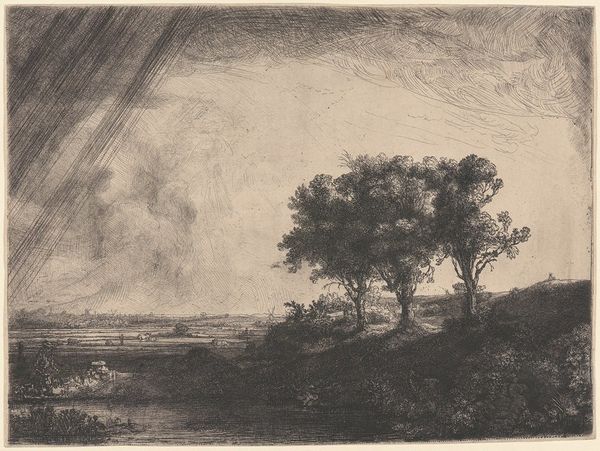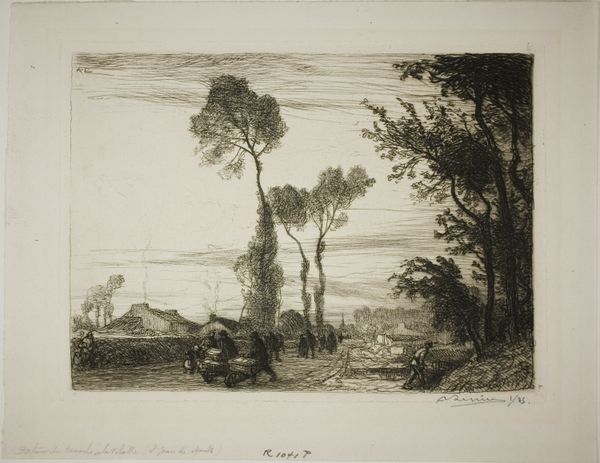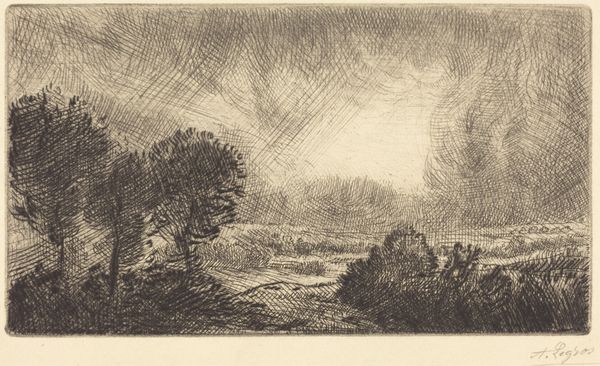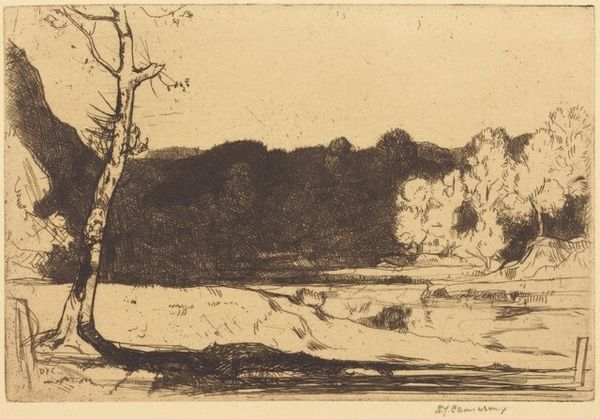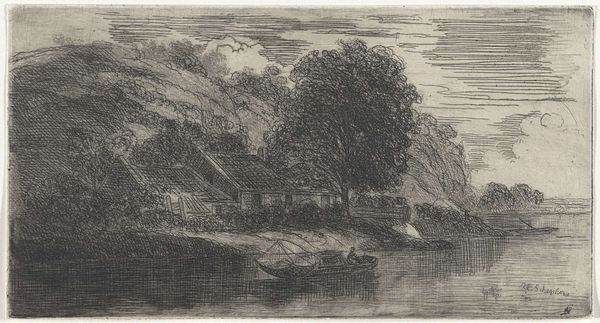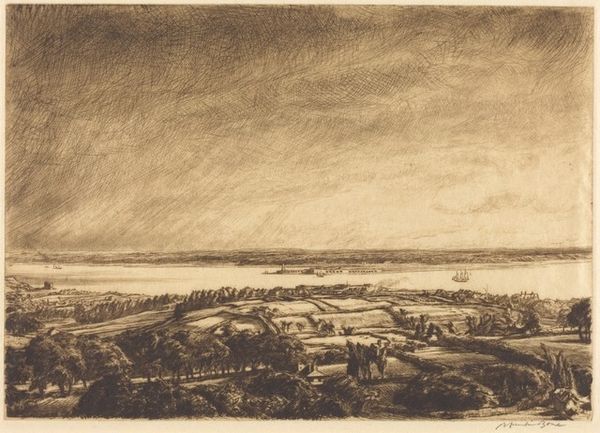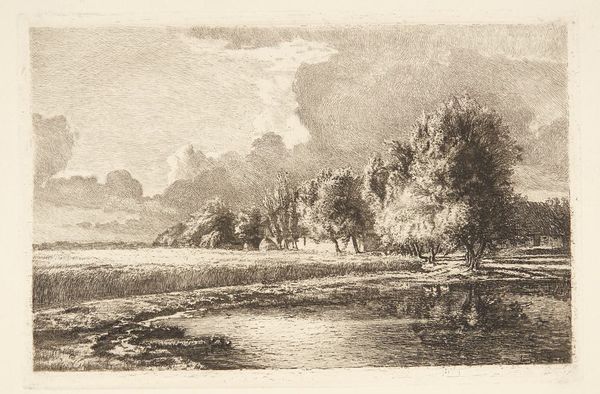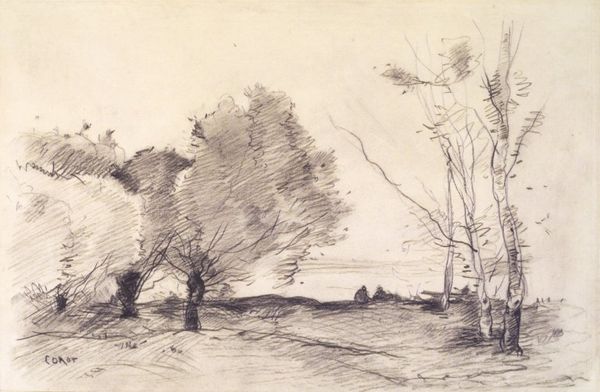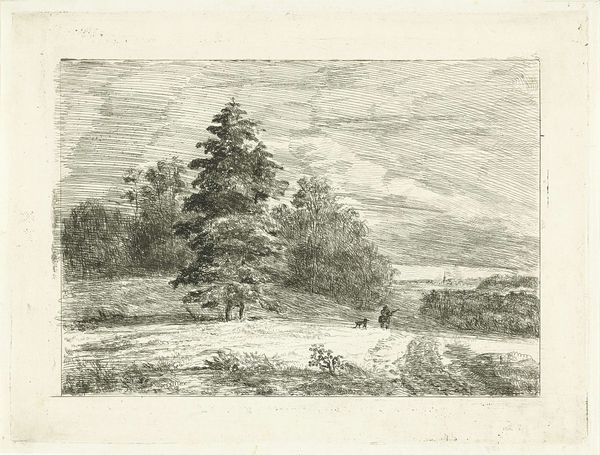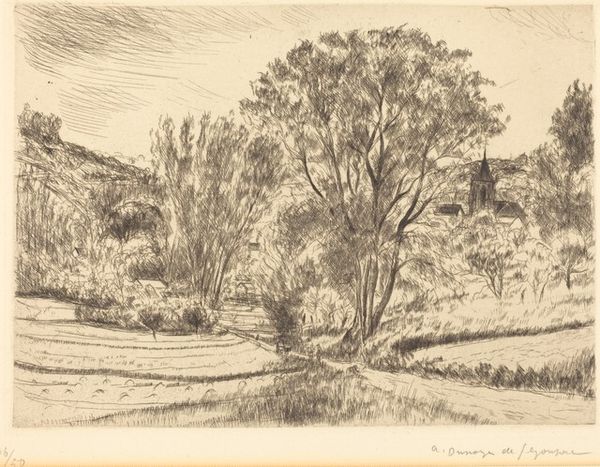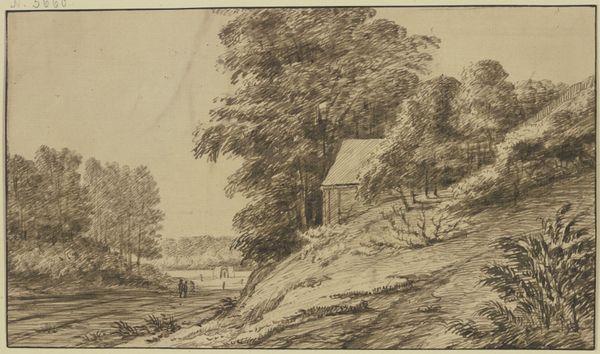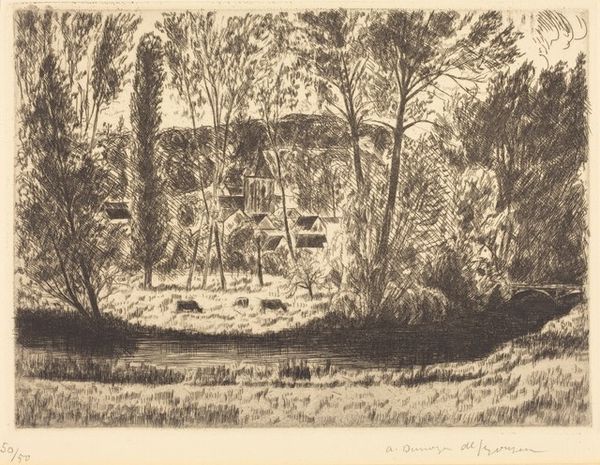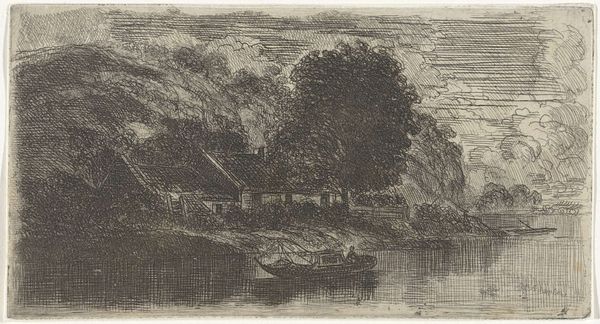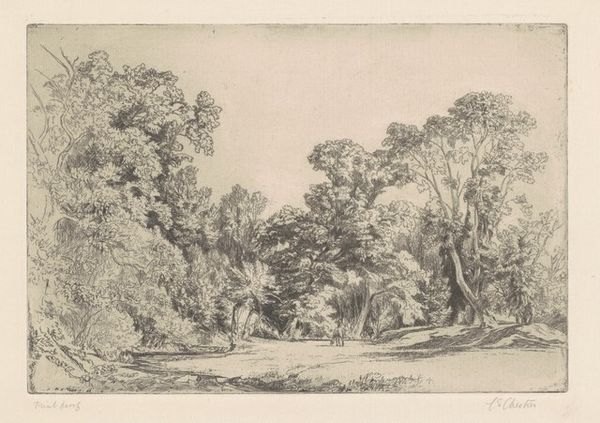
Dimensions: plate: 22.2 × 29.9 cm (8 3/4 × 11 3/4 in.) sheet: 28.7 × 40.6 cm (11 5/16 × 16 in.)
Copyright: National Gallery of Art: CC0 1.0
Editor: This is Percival Gaskell's "Bolton Abbey," an etching from somewhere between 1900 and 1930. The composition, with the abbey ruins nestled in the landscape, creates a feeling of melancholic beauty. What social narratives do you see emerging from this artwork? Curator: I see this piece as a subtle commentary on the shifting power dynamics of early 20th century Britain. The Abbey, a former symbol of religious authority, is now presented as a ruin, subservient to the "natural" landscape. How does this resonate with contemporary debates on secularization and the declining influence of traditional institutions? Editor: That’s fascinating. So, it's not just about aesthetic appreciation, but a reflection on societal changes? Curator: Exactly! Consider the medium itself – etching, a technique that allows for detailed replication. In a time of increasing industrialization, how does the choice of this "traditional" printmaking process comment on anxieties surrounding mass production and the commodification of art and culture? Is it an act of resistance to dominant, capitalist values? Editor: I hadn't thought of the technique as carrying such weight. Now that I see your point, the artist’s choice seems laden with meaning. How does romanticism fit into your reading of social narrative and art history? Curator: The romantic lens invites a re-enchantment with ruins as the past that continues to resonate. It refutes the claims to relentless forward movement assumed under an ever accelerating progress. This focus, though seemingly a step away from real-world political action, encourages viewers to critically reflect on the socio-political dynamics embedded within these romanticized historical sites. The picturesque serves as an ideological vehicle, a way to engage viewers in a quiet rebellion of the self against societal shifts. Editor: I never would have thought of it that way, this new perspective is challenging all my assumptions! Thank you. Curator: The pleasure is mine! It highlights how artworks are complex intersections of artistic intent, historical context, and our ever-evolving understanding.
Comments
No comments
Be the first to comment and join the conversation on the ultimate creative platform.
